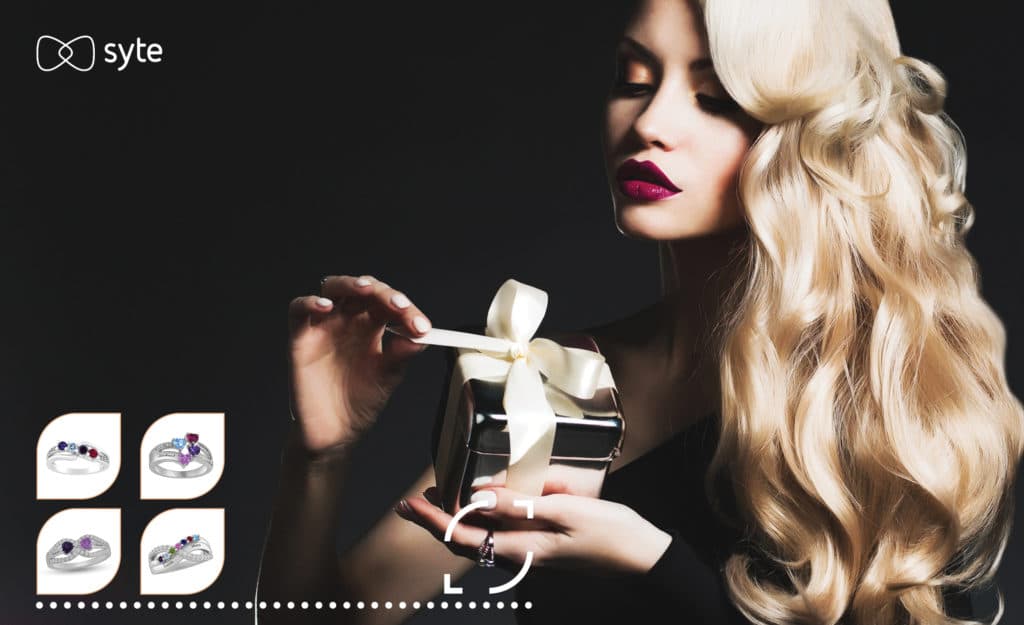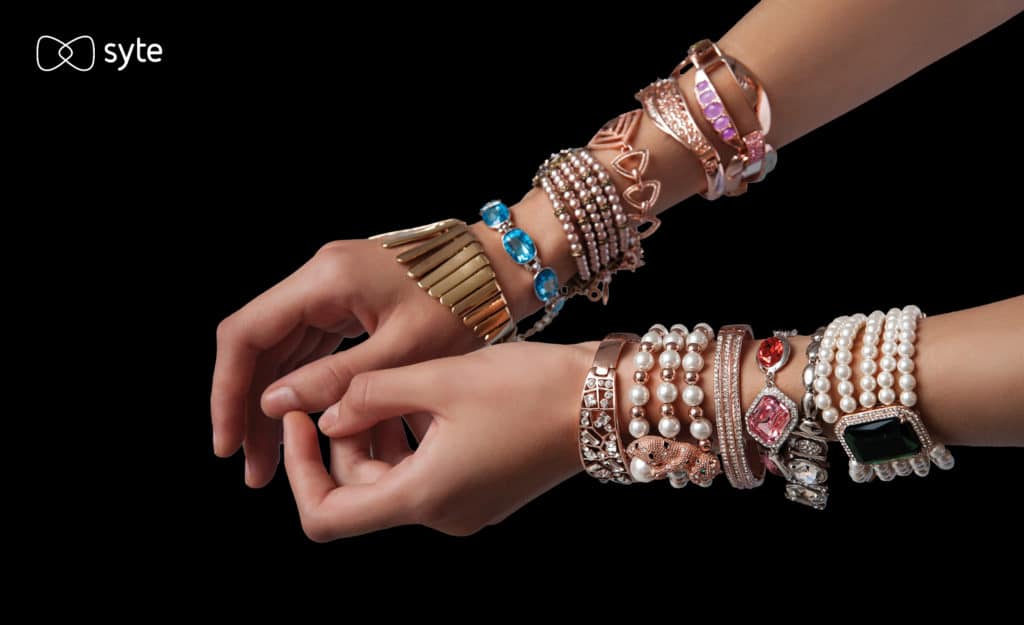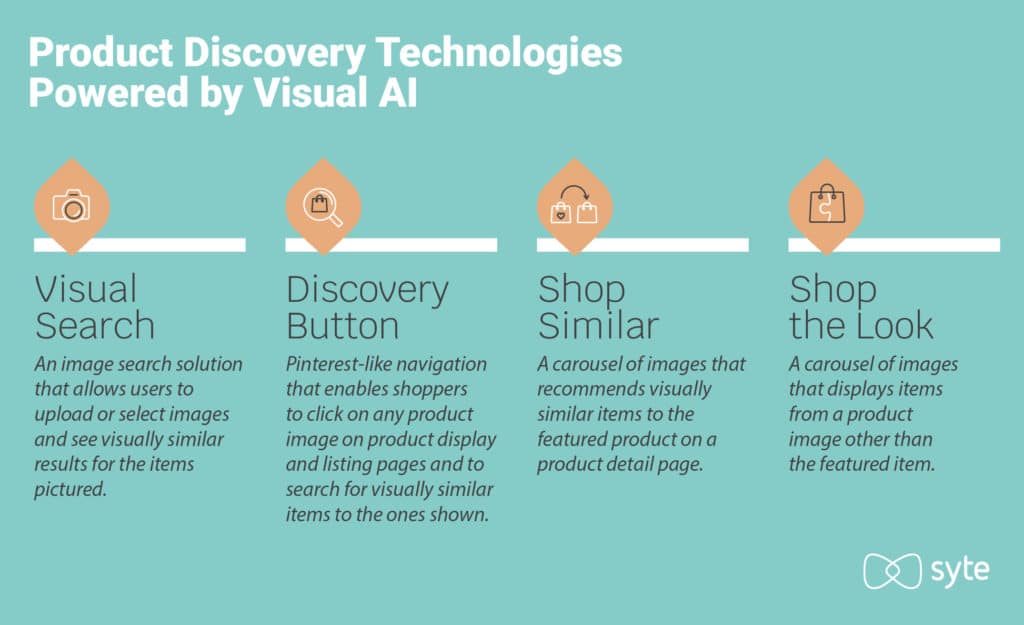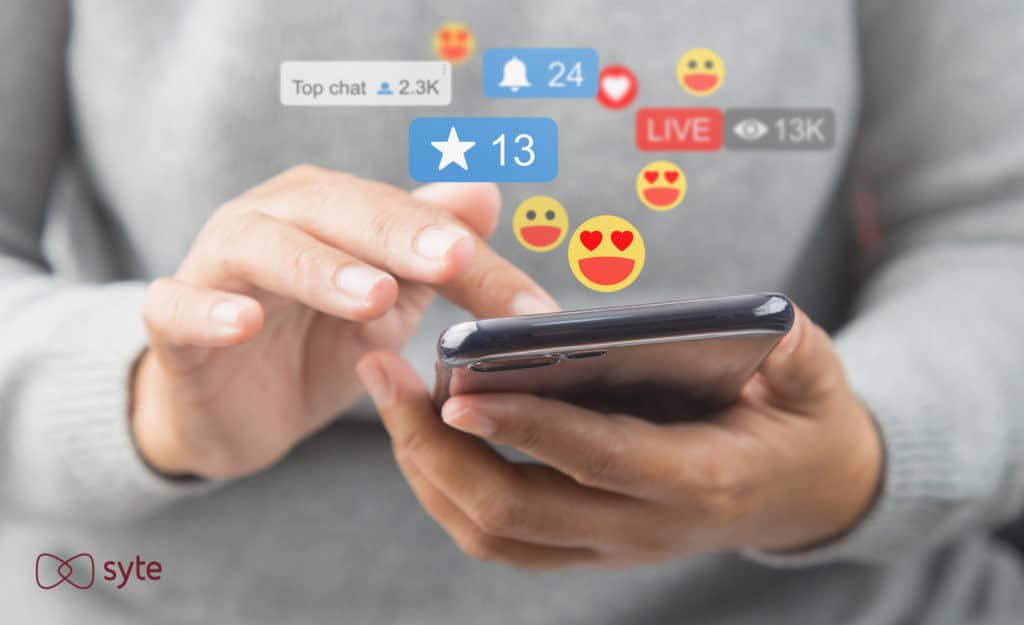Visual AI is transforming retail. As eCommerce traffic explodes and brick-and-mortar stores strive to reinvent the in-store experience, visual search tools offer a more intuitive and personalized shopping experience than ever before. Now, brands and retailers in both the digital and physical spheres are looking to visual AI solutions to seize the momentum of growing demand.
This guide offers a deep dive into the fascinating and rapidly developing world of visual search technology and the online shopping experiences it powers in the jewelry space. Its goal is to provide you with a thorough understanding of how to create inspiring and memorable customer experiences, and to demonstrate how visual AI technologies empower retailers to exceed consumers’ rising expectations while boosting revenue and long-term loyalty.
What is Visual Search?
Not long ago, internet users had only one way to search for an image. That was by typing a text-based query into a search engine and selecting the option to view image results. But traditional, text-based search queries automatically limit what we can discover to the words we use to describe what we’re looking for. Visual search helps us overcome these obstacles by eliminating the guesswork while enabling precise search results.

Instead of typing in a text-based query, users can simply upload a photo to a visual search engine. It may be a photo they saw on Instagram, a photo on the front page of their local newspaper, or one they snapped themself. The visual search engine analyzes each pixel within the image and uses this information to identify and interpret the objects within them. Based on this analysis, the visual search engine produces relevant results and introduces the user to a world of information that transcends language and knowledge barriers.
How Does Visual Search Work?
While many factors dictate the success of a visual search engine, there are two key technologies required: computer vision and image recognition. Here’s how they tie in:
Computer vision is a form of artificial intelligence that enables your phone, tablet, or laptop to “see.” For example, it’s what allows a QR code reader to decipher different marks or a barcode scanner to recognize stripes of varying widths. It’s also what tells your smartphone to unlock after identifying your face and not someone else’s. If your camera lens can be likened to your eyes, computer vision can be compared to the part of your brain that actually gives you the sense of sight.
But simply seeing an object doesn’t mean you understand it. Image recognition is what allows a computer to actually identify, understand, and categorize specific objects within an image. To do this accurately, visual AI requires training.
Researchers and engineers train a visual AI engine to interpret and identify specific elements within images by introducing them to as many categorized and labeled images as they can. The AI engine processes and learns from every pixel in each image so it can refine and expand its understanding of different objects over time.
For example, engineers can feed a visual AI engine thousands of images of bracelets in different styles and materials. Then when you upload an image to the visual AI engine, it automatically compares each pixel to every bracelet it’s ever seen. This means that when you input a photo of a model wearing jewelry via computer vision, the AI engine can point to the bracelet, know what it is, and identify its tiniest characteristics in an instant.

What Are the Benefits of Visual Search for Jewelry Brands?
Visual search has a number of far-reaching benefits for jewelry brands and retailers. Arguably, the most important one is that it enables effective product discovery — after all, if customers can’t find what they are looking for, they will never complete a purchase. When you set the stage for a stellar product discovery journey right from the get-go, it elevates the customer experience and can have a powerful ripple effect — it can boost conversions, increase revenue, encourage future purchases, and build long term brand loyalty. Now, let’s take a closer look at each of these benefits and a few more notable perks.
1. The Connection Between Effective Product Discovery and an Elevated Customer Experience
The eCommerce universe is saturated with competition, which means the traditional points of comparison — price, quality, and speed of delivery — have become table stakes for brands and retailers. Today, consumers assess businesses and make purchasing decisions based on the quality of the customer experience.
- 47% of consumers said they would be willing to pay more for a shopping experience that consistently exceeds their expectations.
- 80% of shoppers said innovative eCommerce technologies improved their online experience.
- 47% of shoppers said they would avoid doing business with a retailer after a frustrating experience.
With statistics like these at hand, innovative jewelry brands and retailers have quickly realized the potential for visual search technologies to boost sales and improve the customer experience by making product discovery as engaging and inspiring as possible.

The product discovery process often forms a shopper’s first impression of your brand, and it influences the overall customer experience in each subsequent session. A product discovery solution that introduces shoppers to items that match their taste and inspires them to buy will contribute to a standout customer experience. On the other hand, a product discovery process that’s riddled with friction and surfaces irrelevant items will drive shoppers away.
Visual search enables an entirely new approach to product discovery, in which shoppers no longer need to rely on knowledge or language to find what they’re looking for. Instead, they can easily find products that fit their taste and goals in the same moment that they feel inspired — whether they are scrolling through social media, walking down the street, or already browsing your website.
2. The Right Combination of Visual AI Solutions Can Support Omnichannel Retail
Brands and retailers often combine two or more visual AI solutions to augment their existing product discovery process. For example, with visual search, a shopper that just saw their favorite model post a necklace they love on Instagram can upload the photo to find similar necklaces on your website. If a shopper arrives at your site before knowing what they want, you can also provide them with inspirational images from social media.
With visual search tools like the Discovery Button, shoppers deeper in your website navigation can click on product images to find similar items, and then easily filter the results to fit their individual criteria.
With recommendation engines like Shop Similar and Shop the Look, they can immediately explore visually similar and complementary items to those on product detail pages. Each of these technologies is underpinned by visual AI that understands your shoppers’ unique visual tastes.

Visual search also adds value to the in-store shopping experience. Shoppers who come in with a photo in mind can upload to an in-store tablet or screen display and easily be connected with similar items. Those who aren’t sure what they are looking for can scroll through an interactive inspiration gallery, bringing the online experience in-store. This is particularly helpful for shoppers who are motivated to buy but don’t have the patience for parsing through displays themselves, or for those who are concerned about hygiene and safety due to COVID-19, preferring to locate their desired item as quickly as possible.
3. How Visual Search Boosts Conversion and Revenue
One of the most tangible benefits of visual search technologies for brands and retailers is increased conversion and revenue. On average, shoppers who engage with visual search on-site convert at a rate 177% higher and have an average order value nearly 10% higher than those who don’t.
When it comes to the jewelry vertical, those numbers are even more impressive — in our report, “The State of eCommerce Discovery in the New Normal,” we found that jewelry shoppers who engaged with on-site visual product discovery technologies converted at a rate 689.6% higher than shoppers who did not use the tools.

Visual search leads to greater sales because it makes the process of discovering new products as efficient and engaging as possible. Indeed, the easier it is for shoppers to find the products they love on your website, the more likely it is they’ll buy them, even if it wasn’t their initial intention.
By complementing the uplifting effect of visual search with additional visual AI technologies, you can embed product discovery throughout the entire customer journey instead of only at the beginning. For example, by placing tools such as the Discovery Button or Shop Similar carousel on product detail pages or even at checkout, suddenly you create the opportunity for authentic inspiration at every touchpoint. You’ll foster higher on-screen engagement, introduce shoppers to items they may not have found on their own, and motivate them to buy more.
4. Visual Product Discovery Enables Personalized Shopping Experiences
Visual search empowers brands and retailers to achieve far more than simply introducing shoppers to more of their inventory. The technology contributes to a more distinctive, personalized, and engaging customer experience by creating a journey that feels tailored to the individual tastes of each shopper.

With a visual approach to product discovery, brands and retailers can transform routine shopping activities into immersive and memorable experiences. They allow each shopper to feel like a millionaire who has just walked into a fancy department store, in which they get all of the attention and care of the sales reps.
This is the type of experience that enables brands and retailers to stand out against the competition while delighting shoppers. Today’s consumers have high standards and little patience for friction or frustration — which is why creating a compelling experience is more vital than ever before. Visual search tools help support an efficient and seamless experience, from the moment of inspiration to checkout.
5. Visual AI Transforms Inspired, Social Shoppers into Loyal Customers

The use of social media platforms such as Instagram, Facebook, and TikTok have become ubiquitous. The apps and their endless flow of posts have thrust us into the era of inspiration overdrive, in which we constantly consume content that is designed to inspire us to buy. But more often than not, the path from inspiration to purchase is riddled with hurdles or is completely broken.
This becomes even truer as the rate of mobile commerce continues to rise. As of 2019, mobile commerce contributed $2.32 trillion in sales and accounted for 67.2% of total eCommerce purchases. This year, mobile commerce spending is expected to reach $3.5 trillion and account for nearly three-quarters (72.9%) of total online spending.
Modern consumers expect to do everything from their phones. Moreover, shoppers who are used to the instant gratification of same-day shipping and on-demand services desire a seamless and quick shopping experience that begins the moment they feel inspired.

The gap that currently exists between what consumers desire and what most retailers offer creates a huge opportunity for eCommerce businesses that choose to innovate their customer journeys by adopting visual AI. With technology that’s designed to seize and expand upon user inspiration, retailers and brands that implement visual search tools into their customer experience will:
- Shorten the path from product search to conversion — With visual AI solutions, retailers, marketplaces, and brands can more easily connect shoppers with the products that inspire them.
- Improve customer acquisition and unlock loyalty — Visual search offers unprecedented access to highly motivated, purchase-ready traffic that will be more inclined to buy — and visit again — when presented with compelling shopping experiences.
- Encourage spontaneous purchases and increase basket size — If they’re inspired enough, shoppers may be motivated to purchase products they didn’t plan on buying, and even stretch their budgets. Accenture found that younger shoppers — especially Gen Z — are more likely to make purchasing decisions based on impulse. Compared to millennials, nearly 60% more Gen Z’ers have bought something after randomly seeing an item they liked.
6. Visual Search Empowers Jewelry Brands to Capture the Purchasing Power of Millennials & Gen Z
Brands and retailers that are ready to transform product discovery and the overall customer experience must consider the behaviors and priorities of all shoppers, but they would be remiss not to focus their strategies on how to cater to the younger generations.

Millennials started the disruption of the retail industry with their digital savviness and greater disposable income. With the entire retail sector vying for their purchasing power, the first cadre of “digital natives” raised the bar for what constitutes a satisfactory shopping experience, both online and offline. Now, the entrance of Gen Z into the workforce pushes brands and retailers to quickly pivot their customer experience strategies to meet an entirely new set of consumer criteria.
- Social media dominates all other channels — For the generation that has had access to smartphones since childhood, social media consumption is habitual. Platforms such as Instagram and Pinterest are often the origin of shopping journeys for young consumers, with 44% of Gen Z’ers citing social media as a popular source for inspiration. The vast majority of Gen Z shoppers (80%) and 74% of millennials report that social media influences their purchasing decisions. Brands and retailers that wish to remain relevant under the influence of Gen Z need to meet shoppers where they already are — on Instagram feeds, Facebook, Pinterest, and TikTok. Moreover, they must build a bridge — or better yet, a moving walkway — that effortlessly shuttles inspired shoppers from social feeds through the customer journey in a seamless and engaging manner.
- Visual search has become a standard expectation — Young shoppers are particularly eager for an advanced digital shopping experience. For many Gen Z’ers, access to sophisticated eCommerce tools is a primary distinguishing factor when deciding where to spend their money. More than half of young shoppers (62%) want visual search over any other technologies to enhance their online shopping experience. As visual search technology becomes more common in the retail industry, “laggards” will lose out to more forward-thinking brands and retailers.
- Individuality trumps everything — Gen Z likes to be seen as unique individuals, and they expect the brands they shop from to recognize that. Nearly half (49%) think unique products are very important, and 51% say they are more creative than previous generations. Brands and retailers that use technology to understand Gen Z shoppers’ unique aesthetic taste and style will provide the personalized experiences that entice them to buy.
Visual Technology Is the Future
Today, brands and retailers face myriad challenges. They must stand out in a competitive digital market, appeal to a new generation of shoppers with entirely different motivations, and provide a customer experience that is memorable and engaging enough to secure long-term loyalty. Staying relevant requires ongoing work for retail companies, but one thing is clear: visual technology is king.
Visual search and other visual-AI-powered technologies empower retailers to tackle each of these challenges while establishing their brands as advanced, innovative, and committed to providing the best possible customer experience. They make product discovery effortless and intuitive and pave the way to both greater sales and stronger customer loyalty. By adopting visual search technologies now, you will position your business to keep pace with evolving consumer expectations and to stand out as a clear preferred choice in the new era of eCommerce.